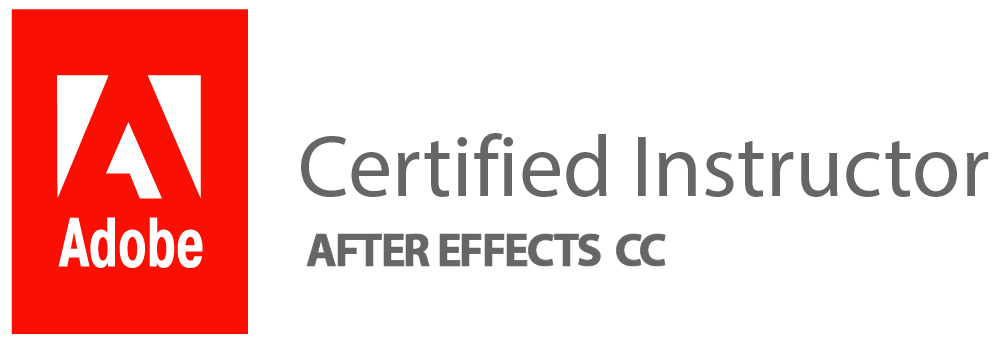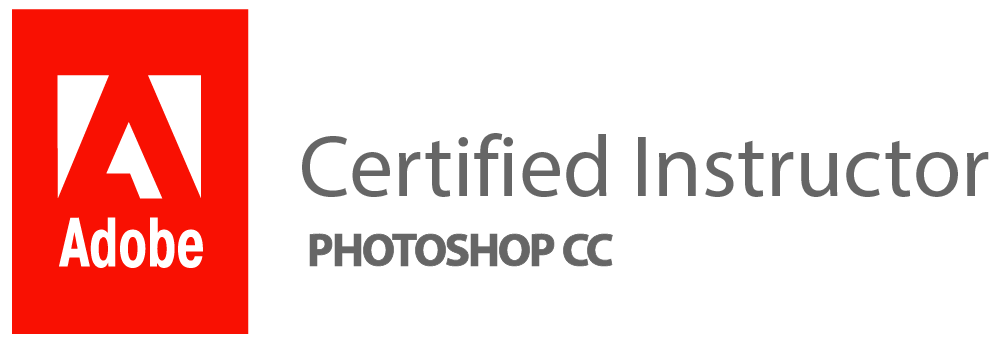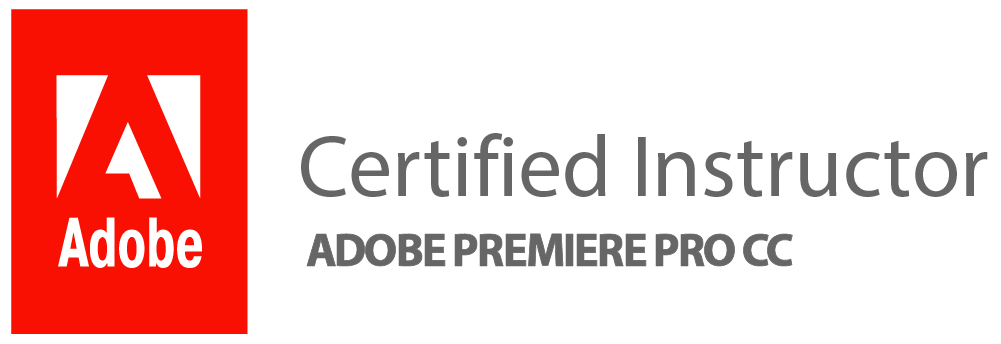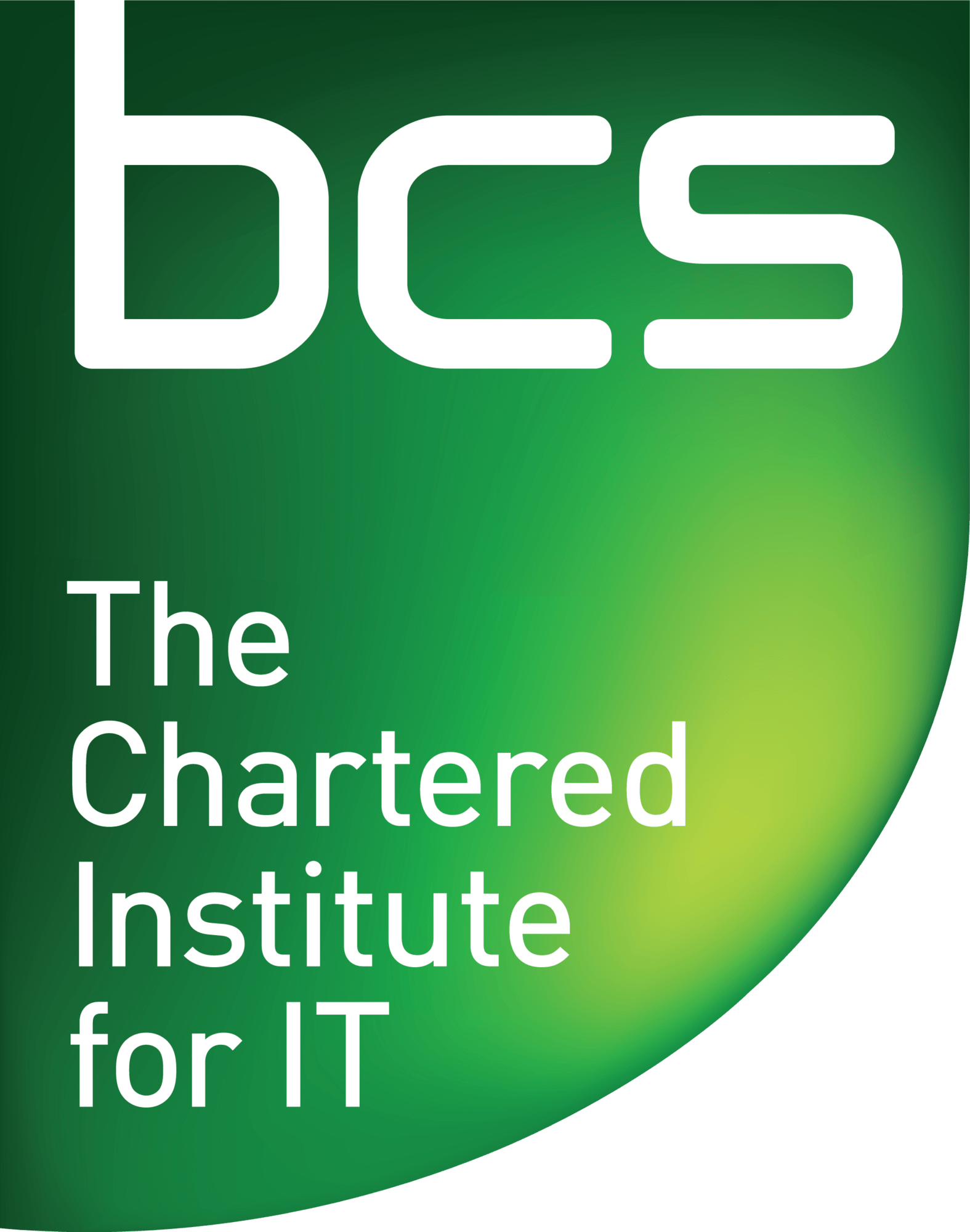What Skills Can I Learn In A Graphic Design Class?
Graphic design is the process of creating visual content using typography, images, and other elements to convey a message or communicate an idea. It involves the use of various tools such as Adobe Photoshop, Illustrator, and InDesign to create designs that are aesthetically pleasing and functional. Graphic designers work with clients to develop designs for logos, websites, advertisements, packaging, and more.
In a graphic design course, students learn about the principles of design, including colour theory, composition, texture, and typography. They also learn how to use different software programs to create their designs. Students may be required to complete projects such as designing a logo or creating a website layout. Additionally, they may study art history and contemporary art movements that have influenced graphic design. The goal of a graphic design course is to prepare students for careers in the field by teaching them technical skills and creative thinking strategies necessary for success in this industry.
History of Graphic Design
In a graphic design course, students typically study the history of graphic design to gain an understanding of how design has evolved and how it has influenced society. The history of graphic design dates back to the early days of printing when books were printed by hand using woodblocks or metal plates. The invention of movable type in the 15th century revolutionized printing and allowed for the mass production of books.
As technology advanced, so did graphic design. In the 19th century, lithography made it possible to reproduce images in large quantities. This led to the creation of advertising posters and other forms of visual communication. With the advent of computers in the 20th century, designers gained new tools for creating digital designs.
Throughout its history, graphic design has been influenced by various art movements such as Art Nouveau, Bauhaus, and Pop Art. Understanding these influences is important for designers who want to create work that is relevant and impactful today. By studying the history of graphic design, students can gain insight into what has worked in the past and use that knowledge to inform their own creative process.
Essential Skills in Graphic Design
In a graphic design course, students learn various essential skills that are crucial to excel in the field. One of these skills is creativity which involves generating unique ideas and concepts. Creativity plays a significant role in graphic design as it is essential to come up with designs that stand out from the competition.
Another important skill is attention to detail. Graphic designers must have an eye for detail, as even the smallest mistake can ruin the entire design. They must ensure that all elements of their work align perfectly, including typography, colours, and layout.
Lastly, proficiency in software tools such as Adobe Photoshop, Illustrator and InDesign is vital for graphic designers. These tools allow them to create stunning visuals and bring their ideas to life. Understanding how to use these programs efficiently will significantly contribute towards producing high-quality designs within tight deadlines. Overall, mastering these skills will help aspiring designers establish themselves in this highly competitive industry.
Core Courses in a Graphic Design Curriculum
The core courses in a graphic design curriculum are essential for equipping students with the necessary skills and knowledge to succeed in the field. These courses typically include design fundamentals, typography, colour theory, and digital media. The design fundamentals course provides a foundation for understanding the principles of layout, composition, and visual communication.
Typography is another critical course that teaches students about font selection, typeface anatomy, and hierarchy. Students also learn how to create compelling designs using colour theory principles such as hue, saturation, and contrast. Finally, the digital media course introduces students to software like Adobe Creative Suite or Sketch for designing graphics on a computer.
Overall, these core courses provide an excellent framework for future graphic designers to build upon as they progress through their studies. They offer a solid foundation in foundational concepts that will benefit them throughout their careers. Those who want to pursue graphic design professional or just looking to broaden their skill set as an artist or designer should consider these core courses essential learning experiences that are worth investing time into mastering.
Specializations available in Graphic Design Coursework
In graphic design coursework, students are exposed to a variety of specializations they can choose from. These specializations allow students to focus on particular areas of interest and develop specific skills that align with their career goals. Some common specializations offered in graphic design courses include branding and identity design, advertising design, web and app design, motion graphics animation, packaging design, typography and typeface design.
Branding and identity designers create logos, visual identities, and brand guidelines for clients, while advertising designers work on creating ads for print or digital media. Web and app designers focus on designing websites or mobile apps, while motion graphics animators work on creating animated videos or presentations that use text, images or video elements. Packaging designers create designs for product packaging using principles of marketing psychology, while typography experts specialize in designing fonts and typefaces that communicate effectively.
Overall, the various specializations available in graphic design coursework provide students with an opportunity to explore different areas of interest within the field of graphic design so they can develop their skills in preparation for careers in those fields.
Future Career Opportunities for Graphic Design Graduates
In a graphic design course, students learn about various aspects of designing, such as colour theory, typography, digital imaging, and page layout techniques. They also receive training in software applications such as Adobe Photoshop and Illustrator to create visual designs for print media and digital platforms. Apart from the technical skills required for the job, graphic design students also study art history and aesthetic principles that help them develop their creativity.
Future career opportunities for graphic design graduates are vast. Graphic designers can work in advertising agencies or design studios as creative directors or art directors. Other potential job opportunities include working for marketing firms or corporate communications departments where they can create branding materials like logos and social media graphics. With the increasing demand for digital marketing content, graphic designers can also find employment in web design companies or social media management firms to create engaging visuals for online campaigns.
Additionally, some graduates may choose to start their own freelance businesses where they offer their services to clients across various fields ranging from fashion to technology industries. Overall, a certificate in graphic design opens up numerous career paths, with the opportunity to work on exciting projects with diverse clients while expressing one’s creative flair through visual communication.
Conclusion: The Value of Studying Graphic Design
After learning about the various concepts and skills that are taught in a graphic design course, it is clear that studying this field has immense value. Not only does it offer practical training on how to create stunning visual designs, but it also teaches students how to think critically and creatively when solving design problems.
Graphic design courses provide an opportunity for students to develop their artistic abilities and learn how to effectively communicate ideas through aesthetics. They also equip students with essential technical skills, such as using software programs like Adobe Photoshop and Illustrator. Furthermore, these courses teach the importance of understanding typography, colour theory, composition, and layout – all critical elements in creating successful designs.
In conclusion, studying graphic design provides individuals with a range of invaluable skills that can be applied across numerous industries. From marketing materials to web design projects or even packaging for products, graphic designers play an important role in shaping our visual world. Therefore, if you have a passion for art or are interested in pursuing a career in the creative industry, then studying graphic design is undoubtedly worth considering!
What Will You Study At Our Graphic Design School?
In our graphic design school, you will study a range of topics that cover both theoretical and practical aspects of graphic design. The course curriculum is designed to provide students with a comprehensive understanding of the industry and its various disciplines, including typography, print design, web design, branding, and packaging.
Our program involves hands-on training in the latest software tools used in the industry. You will learn how to use Adobe Creative Suite programs like Photoshop, InDesign, Illustrator and more. Along with this training on software applications is creative problem solving, where you will work on projects that involve creating designs for real-world clients.
Throughout the program, you will also have opportunities to build your portfolio by working on various projects, such as designing logos or creating marketing materials. By the end of it all, you’ll graduate with an impressive portfolio which showcases your skills and abilities to potential employers in the field.
What Is The Difference Between Graphic And Digital Design?
In a graphic design course, you will learn the principles and techniques of creating visual content for various mediums such as print, web, and advertising. You will be taught how to use design software such as Adobe Illustrator, Photoshop, and InDesign to create logos, brochures, websites, social media graphics and more. You will also learn about typography, colour theory, layout design and composition.
While graphic design focuses on creating visuals using traditional tools or mediums such as paper or canvas with the help of pens or pencils, digital design refers to designing on electronic devices such as computers or tablets using specialized software. Digital designers work with pixels instead of physical materials. They create animations for websites or mobile apps. They also work on user interface designs (UI) which determines how users interact with websites.
To sum it up: Graphic design is mostly used in print, while digital design is mostly used in electronic media like web pages. A good graphic designer can create artwork that can be scanned into a computer program, but they may not necessarily understand the technicalities of working in an exclusively digital environment which is where digital designers come in handy.
Design Thinking
Design thinking is a problem-solving approach used by designers to create effective solutions for complex challenges. It involves a human-centred approach that encourages empathy, collaboration, and innovation. The process begins with empathizing with the users and understanding their needs, constraints, and perspectives. This is followed by defining the problem statement, ideating possible solutions, prototyping and testing them in real-world scenarios.
In graphic design courses, students learn about design thinking as an essential tool for creating effective visual communication. They are taught to think beyond aesthetics and focus on solving problems through design interventions. Through hands-on projects and case studies, they explore different methods of ideation, such as brainstorming, mind-mapping, sketching etc., before selecting the most feasible solution.
Design thinking helps graphic designers to create innovative solutions that not only look good but also serve their intended purpose effectively. It encourages them to consider all aspects of a problem holistically and collaborate with other stakeholders in the process. As such, it is an important aspect of any graphic design course as it equips students with skills that enable them to solve real-world problems creatively.
Graphic Design Rules
In a graphic design course, students learn about the fundamental principles of design, including colour theory, typography, composition and layout. They also study the history of graphic design to gain an understanding of how it has evolved over time and the different styles that have emerged.
One important aspect of graphic design education is learning about the rules that govern good design. These include things like using hierarchy to guide the viewer’s eye across a page or screen, balancing elements to create visual harmony and using contrast to create interest. Students also learn about technical considerations like file formats, resolution and colour profiles.
Overall, a graphic design course aims to equip students with both practical skills and theoretical knowledge so they can go on to create effective visual communication in a variety of contexts. By mastering basic principles and understanding industry standards, designers are better able to produce work that is both aesthetically pleasing and functional.
Visual Language & Concept
Visual language and concepts are essential topics that graphic design students learn in their courses. Visual language encompasses the use of visual elements such as typography, colour, shapes, and images to communicate a message effectively. The elements are used to create harmony and balance in designs while guiding the viewer’s eye towards the intended point of interest.
On the other hand, concepts refer to the ideas behind a design project. Graphic designers learn how to develop unique concepts that resonate with their target audience while considering factors such as market trends, cultural differences, and personal preferences. They also learn techniques for brainstorming ideas and refining their concepts.
Overall, understanding visual language and concepts is crucial for designers who want to create compelling designs that leave a lasting impact on viewers. These topics help students approach design projects with intentionality and purpose while developing creative solutions that communicate messages effectively.
Composition, Hierarchy, Colour Theory, Ideas
Composition, hierarchy, colour theory, and ideas are some of the core concepts that graphic design courses teach. Understanding and implementing these principles is essential for creating effective designs that convey the intended message to their audience.
Composition refers to the arrangement of visual elements on a page or screen. It involves balancing negative space with positive space, using grids and alignment tools to create structure, and considering how the eye moves through a design.
Hierarchy is about emphasizing certain elements over others in order to guide the viewer’s attention. This can be achieved through size, colour, contrast, typography choices, and other techniques.
The colour theory explores the psychological effects of different colours and how they can be used together harmoniously or in contrast to convey specific moods or messages.
Finally, generating creative ideas is an important part of any design course. Students learn techniques for brainstorming and researching inspiration sources like mood boards or competitor analysis charts. They also practice developing unique solutions to design problems while keeping in mind all of these principles mentioned above as crucial guides for their work.
Thinking Outside The Box
Thinking outside the box is a vital component of any graphic design course. Students are encouraged to explore and experiment with various techniques, styles, and mediums to develop their creativity. They learn how to challenge conventional thinking and push boundaries in order to come up with innovative designs that stand out from the crowd.
In addition to learning about traditional elements of design, such as colour theory, typography, and layout, students also study cutting-edge technologies such as 3D modelling and animation. This enables them to create dynamic designs that engage audiences in new ways. The ability to think outside the box is particularly important in today’s fast-paced digital environment, where brands need fresh ideas that capture attention quickly.
Overall, studying graphic design involves honing critical thinking skills and developing a deep understanding of how visual communication impacts society. By thinking outside the box, students can bring their unique perspectives and approaches to bear on complex challenges in order to create work that is both meaningful and impactful.
How Does Good Design Affect Customer Conversion Rates?
In a graphic design course, students learn about the principles of good design, such as colour theory, typography, composition, and layout. They also study various software programs used in the industry, such as Adobe Photoshop and Illustrator. Additionally, they learn about different types of design projects they may encounter in their careers, including branding and packaging design.
Through hands-on assignments and critiques from instructors and peers, students develop their skills in creating effective designs that communicate a message or solve a problem for a client. They are also taught to consider the user experience and how their designs can impact customer behaviour. Overall, a graphic design course provides students with the foundational knowledge and practical skills necessary to succeed in the field of design.
UX UI (User Experience & User Interface)
In a graphic design course, students learn about different aspects of design, such as typography, colour theory, composition, and layout. However, one of the most important components of graphic design is user experience (UX) and user interface (UI) design. These two areas focus on creating designs that are not only aesthetically pleasing but also functional and easy to use.
UX designers work on the overall experience a user has when interacting with a product or service. This includes understanding user needs, designing interfaces that are intuitive and easy to navigate, and testing designs to ensure they meet user expectations. UI designers focus more on the visual elements of an interface, such as buttons, icons, and menus. They work closely with UX designers to create a cohesive look and feel that enhances the overall user experience.
In today’s digital age, where users interact with technology constantly, UX UI design has become increasingly important in fields beyond just graphic design. Companies now seek out professionals who can create seamless experiences across all platforms, from websites to mobile apps to physical products. By learning UX UI design principles in a graphic design course, students gain valuable skills that will make them valuable assets in various industries.
Adobe Photoshop & Adobe Illustrator & Adobe Indesign
In a graphic design course, students will typically learn how to use various software programs such as Adobe Photoshop, Adobe Illustrator and Adobe InDesign. These programs are essential tools for any graphic designer and are used for different purposes.
Adobe Photoshop is a powerful image editing software that allows designers to create or manipulate images. It offers a range of features, including retouching, colour correction, filters and effects. It’s commonly used to edit photographs or create digital artwork.
Adobe Illustrator is primarily used for creating vector graphics which can be scaled infinitely without losing quality. This makes it ideal for creating logos, icons and typography.
Adobe InDesign is a layout program that is used to design publications such as brochures, magazines and books. It provides the tools necessary to arrange text and images in an aesthetically pleasing way.
Overall, proficiency in these three software programs is crucial for anyone pursuing a career in graphic design.
Build Websites: Figma, WordPress, Elementor.
One of the essential skills a graphic design course should teach us how to build websites. Figma, WordPress, and Elementor are three tools that can help designers create beautiful and functional websites.
Figma is a design tool that allows designers to create wireframes, prototypes, and visual designs for web and mobile applications. It’s an excellent tool for collaborative work since multiple team members can work on the same project simultaneously.
WordPress is one of the most popular content management systems globally, powering over 40% of all websites on the internet. WordPress offers users a variety of templates and plugins that allow designers to customize their website’s appearance without needing extensive coding knowledge.
Elementor is a drag-and-drop page builder plugin for WordPress that enables users to create custom pages easily. It has a vast library of pre-designed templates, widgets, and modules that designers can use to build professional-looking websites quickly.
In conclusion, learning how to use Figma, WordPress, or Elementor in graphic design courses will equip students with valuable skills in website-building necessary for their careers.
High Demand
One of the reasons why graphic design courses are in high demand is because of the wide range of topics they cover. Students studying graphic design learn about various design principles, colour theory, typography, layout and composition techniques, as well as software programs such as Adobe Creative Suite. Additionally, many courses also include studies in marketing and branding.
Another factor contributing to the high demand for graphic design courses is the growing significance of visual communication in society today. With advancements in technology and social media platforms, businesses are constantly seeking ways to communicate their message through visually appealing content. As such, there has been a surge in job opportunities for skilled graphic designers across a variety of industries, including advertising, publishing and web design.
Lastly, with more people seeking creative careers that allow them to express themselves artistically while still making a living wage, it’s no surprise that interest in graphic design continues to rise. Whether it’s freelancing or working for an agency or business full-time, the possibilities for career growth within this field are virtually limitless, which only adds to its high demand among students looking into different career options.
Multimedia & Interactive Media
In a graphic design course, students are introduced to the various aspects of multimedia and interactive media. Multimedia includes the use of audio, video, animation and graphics in a single platform. Interactive media focuses on user engagement with digital content through interfaces such as websites and mobile applications.
Students will learn how to create effective multimedia presentations that incorporate audio, video and graphics. They will also explore different software tools for designing animations and special effects. In addition, they will gain knowledge about the principles of web design, including layout, typography and colour theory.
Interactive media is an important aspect that graphic designers must consider when creating digital content for websites or mobile applications. They need to understand how users interact with digital interfaces in order to create intuitive designs that enhance user experience. This involves studying human-computer interaction (HCI) principles and learning how to design interfaces that are easy to navigate while providing engaging experiences for users. Overall, multimedia and interactive media are essential components of modern-day graphic design courses which prepare students for careers in this field by equipping them with skills necessary to meet industry demands.
Motion Graphics & After Effects
One of the key areas of focus in a graphic design course is motion graphics and animation, which involves creating dynamic visual content that moves and interacts with the viewer. This can be achieved using software such as Adobe After Effects, which allows designers to create complex animations and effects using a range of tools and techniques.
In order to master motion graphics and After Effects, students will typically learn about keyframe animation, timing and spacing, easing, interpolation, masking, compositing, particle systems, 3D layering and camera movements. They will also explore best practices for designing effective animated content for different mediums, such as web pages, social media platforms or video presentations.
Through hands-on projects and exercises in class, students will develop their skills in creating animated logos or branding elements; kinetic typography; explainer videos; product demos; music videos; short films or documentaries, among others. By mastering motion graphics concepts using After Effects software, graphic design students are better equipped to help clients bring their brand identities to life through engaging visual content that stands out from the competition.
Digital Illustrations
Digital illustrations are an essential aspect of graphic design, and they play a significant role in delivering the message to the audience. In a graphic design course, students learn how to create digital illustrations using various software programs such as Adobe Illustrator and CorelDRAW. The students are taught how to use different tools, such as brushes, pens, and pencils, to create stunning illustrations that convey the intended message.
Moreover, students learn about colour theory and its significance in creating digital illustrations. They acquire knowledge on how colours can affect emotions and moods in people and learn how to choose colours based on their purpose. Additionally, they learn about vector graphics which help them create high-quality images that can be resized without losing their quality.
In conclusion, digital illustration is an integral part of graphic design courses. It equips learners with skills that help them create beautiful designs that communicate effectively with their target audience. Students in these courses explore different techniques used for creating digital illustrations while understanding the importance of colour theories and vector graphics in designing visual communication artwork.
Why Is A Graphic Designer Portfolio Important?
In a graphic design course, students are taught various skills and knowledge required to become successful in the field of graphic design. The curriculum is designed to develop creativity, technical proficiency, communication skills, critical thinking abilities and visual problem-solving techniques among students.
Students learn about various elements of design, such as typography, colour theory, layout principles, image manipulation techniques and different software programs used in the industry. They are also taught about branding and marketing strategies, along with how to work within deadlines and budgets while collaborating with clients.
One of the most important components of a graphic design course is building a strong portfolio. A portfolio showcases the student’s best work and demonstrates their skills to potential employers or clients. It allows them to stand out from other candidates by highlighting their unique style and approach towards solving visual problems. A well-organized portfolio that showcases diversity in projects can demonstrate versatility in skillsets which are highly valued in the industry.
Visual Language & Branding
In a graphic design course, students learn the importance of visual language and branding. Visual language refers to the use of images, typography, colours, and other design elements to communicate a message or idea. Branding involves creating a unique identity for a company or product through the consistent use of visual elements.
Students are taught how to create effective designs that convey specific messages to target audiences. They learn how to choose appropriate colours, fonts, and other design elements based on the intended purpose of the project. Additionally, students are introduced to various software programs used in graphic design, such as Adobe Photoshop and Illustrator.
Through projects and assignments, students develop their skills in designing logos, packaging designs, advertisements, and other marketing materials. They gain an understanding of how visual language can be used strategically to create powerful brand identities that resonate with customers. Overall, studying visual language and branding is crucial for any aspiring graphic designer looking to succeed in the competitive world of design.
Graphic Design For Business
In a graphic design course for business, students learn the fundamental principles of design that are essential in creating effective and visually appealing marketing materials. These include typography, colour theory, composition, and layout. Students also learn how to use various software applications such as Adobe Photoshop, Illustrator, and InDesign to create professional designs.
In addition to technical skills, students also learn how to effectively communicate with clients and understand their needs. They are taught how to conduct research on target audiences and competitors in order to create designs that are both visually appealing and strategically effective. Business-oriented graphic design courses may also cover topics such as branding, advertising, packaging design, and web design. By the end of the course, students should have a strong portfolio showcasing their abilities in using design principles to solve real-world business challenges.
Visual Language For Social Media
In a graphic design course, students learn the fundamentals of visual language for social media. This includes typography, colour theory, composition, and layout design. Students also develop skills in using various software programs such as Adobe Photoshop and Illustrator to create digital graphics.
Beyond technical skills, students also learn how to communicate visually to convey messages effectively on social media platforms. They study different types of visual content that are popular on various platforms, including images, videos, animations, infographics and more. Additionally, they learn how to use visuals to tell stories through brand identity development and creating marketing campaigns.
Overall, a graphic design course helps students develop a critical eye for aesthetics while building their creative abilities. By the end of the course, they should be able to confidently apply their new knowledge in creating compelling visuals that engage audiences across all social media channels.
Design Apps And Websites
In a graphic design course, students are taught the fundamental principles of design, such as colour theory, composition and typography. They also learn how to use design software such as Adobe Photoshop, Illustrator and InDesign. Students are trained to develop their creativity and problem-solving skills through various exercises that involve designing logos, posters, and layouts for websites and mobile applications.
When it comes to designing apps and websites specifically, there are several important elements that must be considered. The user experience (UX) is crucial in ensuring that users can navigate the app or website easily and efficiently. This involves creating interfaces that are intuitive and visually appealing while also being functional. Designers must also consider the responsive design aspect of their work – ensuring that the interface adapts seamlessly across different devices with varying screen sizes.
Overall, studying graphic design provides aspiring designers with the skills they need to create effective visual communication through apps, websites and other mediums. It’s an exciting field that requires both creativity and technical proficiency to succeed in today’s digital landscape.
Visual Communication UI UX
In a graphic design course, students learn about visual communication and its various elements. This includes typography, colour theory, composition, and layout design. Students also gain knowledge on how to use industry-standard software such as Adobe Photoshop, Illustrator, and InDesign.
A crucial aspect of graphic design is user interface (UI) and user experience (UX) design. UI/UX designers work towards creating digital products that are easy to use while ensuring an aesthetically pleasing experience for the users. They focus on designing interfaces that are intuitive and user-friendly while considering the functionality of the product.
The importance of visual communication in UI/UX design cannot be overstated. Good UI/UX designers must be able to effectively communicate ideas through visuals such as icons, graphics, images, or animation to create an engaging user interface that is informative but not overwhelming. In conclusion, studying graphic design exposes students to critical skills needed in today’s digital age for effective visual communication through UI/UX designs.
Visual Communication Vs Graphic Design
In a graphic design course, students learn a wide range of skills and techniques related to creating visual communication. This includes learning how to use industry-standard software such as Adobe Photoshop, Illustrator, and InDesign, as well as developing an understanding of fundamental design principles like composition, typography, colour theory, and branding.
While visual communication and graphic design are often used interchangeably, there are some subtle differences between the two. Visual communication encompasses all forms of communication that rely on visuals to convey meaning – this can include everything from photographs and videos to infographics and data visualization. Graphic design is a specific subset of visual communication that focuses on using typography, imagery, and other design elements to create visually appealing materials for print or digital media. As such, graphic designers must have a deep understanding not only of the technical aspects of design software but also of the creative nuances involved in crafting effective designs that resonate with their intended audience.
Application Building Vs Graphic Design
In a graphic design course, students learn the fundamentals of design theory and creative problem-solving. They are taught how to use design software such as Adobe Photoshop, Illustrator, and InDesign to create visual communications that effectively convey ideas and messages to a target audience. The course also covers colour theory, typography, branding, layout design, image editing techniques, and print production processes.
On the other hand, application building involves creating functional software applications that solve specific problems or meet certain user needs. This process involves coding languages such as JavaScript, Python or Swift. It requires advanced programming skills and knowledge of app development frameworks like React Native or Flutter. App builders also need an understanding of user experience (UX) design principles to ensure the app is intuitive and easy to use.
While both graphic design and application building require creativity and technical skills in their respective fields, they serve different purposes. Graphic designers focus on creating visually compelling designs that communicate messages effectively, while application builders aim at delivering efficient solutions through technology using complex coding languages like Python or Swift. In conclusion, graphic designing is concerned with aesthetic appeal, while app development focuses on functionality by providing solutions for real-world problems with technological tools.
Graphic Design & Marketing
In a graphic design course, you will learn the fundamentals of design principles such as colour theory, typography, and layout. You will also be introduced to software programs like Adobe Photoshop, Illustrator, and InDesign that are commonly used in the industry.
Graphic design courses focus on teaching students how to create visually appealing designs for various mediums, including print materials like brochures and business cards, digital platforms such as websites and social media graphics, and even motion graphics for videos.
Marketing plays a crucial role in graphic design as it is essential to create designs that effectively communicate a message or promote a product or service. In marketing courses within graphic design programs, students learn about target audiences, market research, advertising strategies and branding techniques. By combining these two areas of study together, designers are able to create effective visual communication through their designs that can influence consumer behaviour.
What Are The Most Common Mistakes & How Can You Avoid Them When Working On A Graphic Design Project?
In a graphic design course, you will learn about the principles of design, colour theory, typography, layout and composition, and software skills such as Adobe Photoshop, Illustrator, and InDesign. While these are all important elements to master for successful graphic design projects, it’s equally important to avoid common mistakes that can detract from your work.
One of the most common mistakes in graphic design is not having a clear understanding of the project requirements or target audience. Without this understanding, you may create designs that miss the mark or fail to communicate effectively. To avoid this mistake, take time at the beginning of each project to gather information on the client’s goals and audience demographics.
Another mistake is overcomplicating designs with too many elements or fonts. This can make it difficult for viewers to understand the message or hierarchy of information. To avoid this mistake, simplify your designs by using fewer elements and focusing on effective communication through layout and typography choices.
Finally, not proofreading your work can lead to embarrassing errors in spelling or grammar. To avoid this mistake, always take time to review your work carefully before submitting it for final approval. By avoiding these common mistakes in graphic design projects, you’ll be better equipped to produce high-quality work that meets client expectations while effectively communicating their message.
Work From Home
As the world shifts towards remote work, more and more people are opting to work from home. This has resulted in a significant rise in online job opportunities across different fields, including graphic design. Graphic designers who once had to commute to their workplace can now work from the comfort of their homes without compromising on productivity or creativity.
Graphic design is a vast field that encompasses many specializations, such as typography, web design, branding, and print media. Students pursuing a graphic design course learn various software tools like Adobe Photoshop and Illustrator to create visually appealing designs for websites, brochures, magazines, and logos, among others. They also learn about colour theory and how it impacts emotions and perceptions.
A graphic design course also includes modules on branding where students learn how to develop logos that capture the essence of a brand’s identity through colour schemes and typography choices. Additionally, they acquire skills in designing user interfaces for digital platforms such as mobile apps and websites. With these skills learned during their studies combined with the flexibility of working from home technology provides today, graphic designers can produce high-quality work remotely while meeting deadlines set by clients or firms they work with.
Conclusion:
In conclusion, a graphic design course is an excellent opportunity for anyone who wants to pursue a career in the field of design. This kind of program offers students a strong foundation in both technical skills and creative concepts. It gives them practical experience in designing logos, websites, print materials, and other visual media.
Furthermore, studying graphic design can lead to various job opportunities, such as working at advertising agencies, publishing houses, marketing departments, or even starting your own business. Many companies are always looking for professionals with these skills to create better brand identities and marketing campaigns.
Overall, taking up a graphic design course can be fulfilling and rewarding. The skills you learn can help you stand out in today’s competitive job market by giving you an edge over others who lack the same expertise. With proper training and dedication towards mastering this art form, one can achieve great success in their chosen career path in the ever-growing digital world we live in today!











